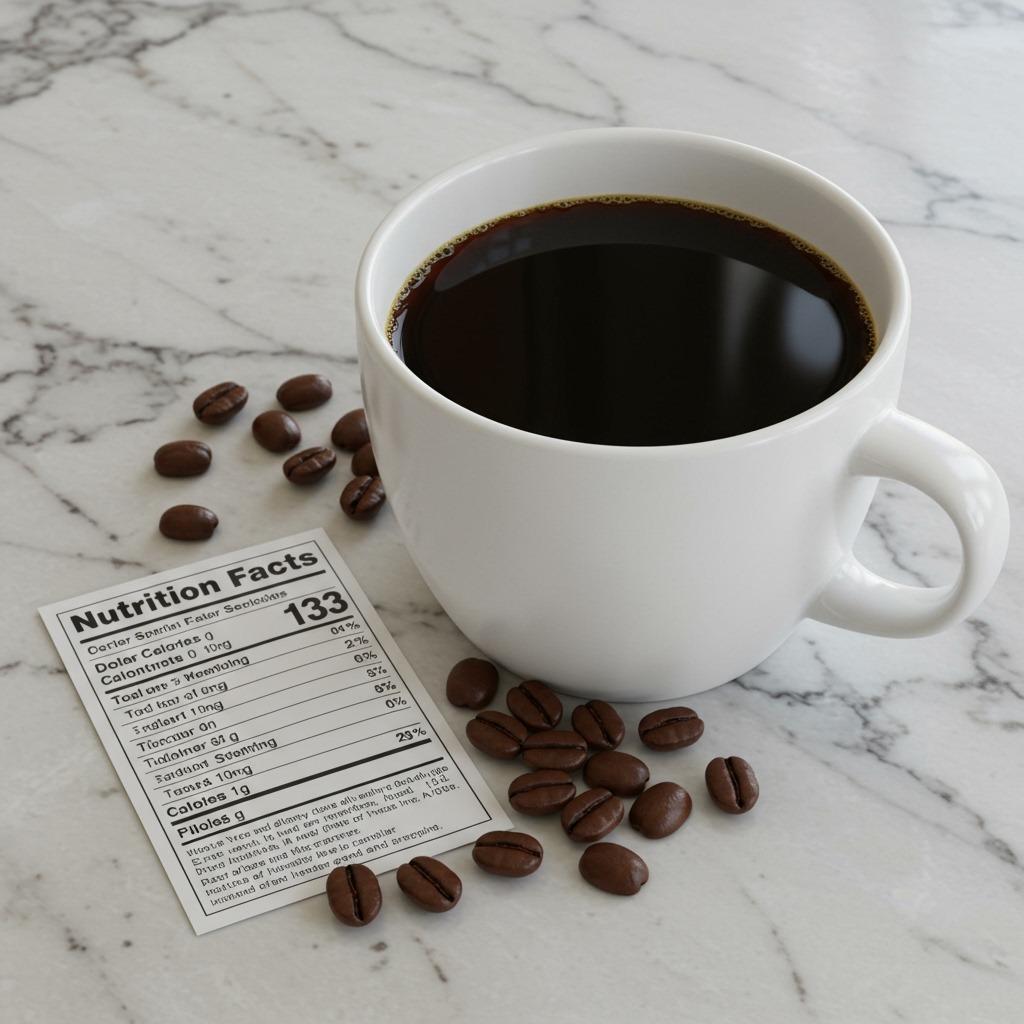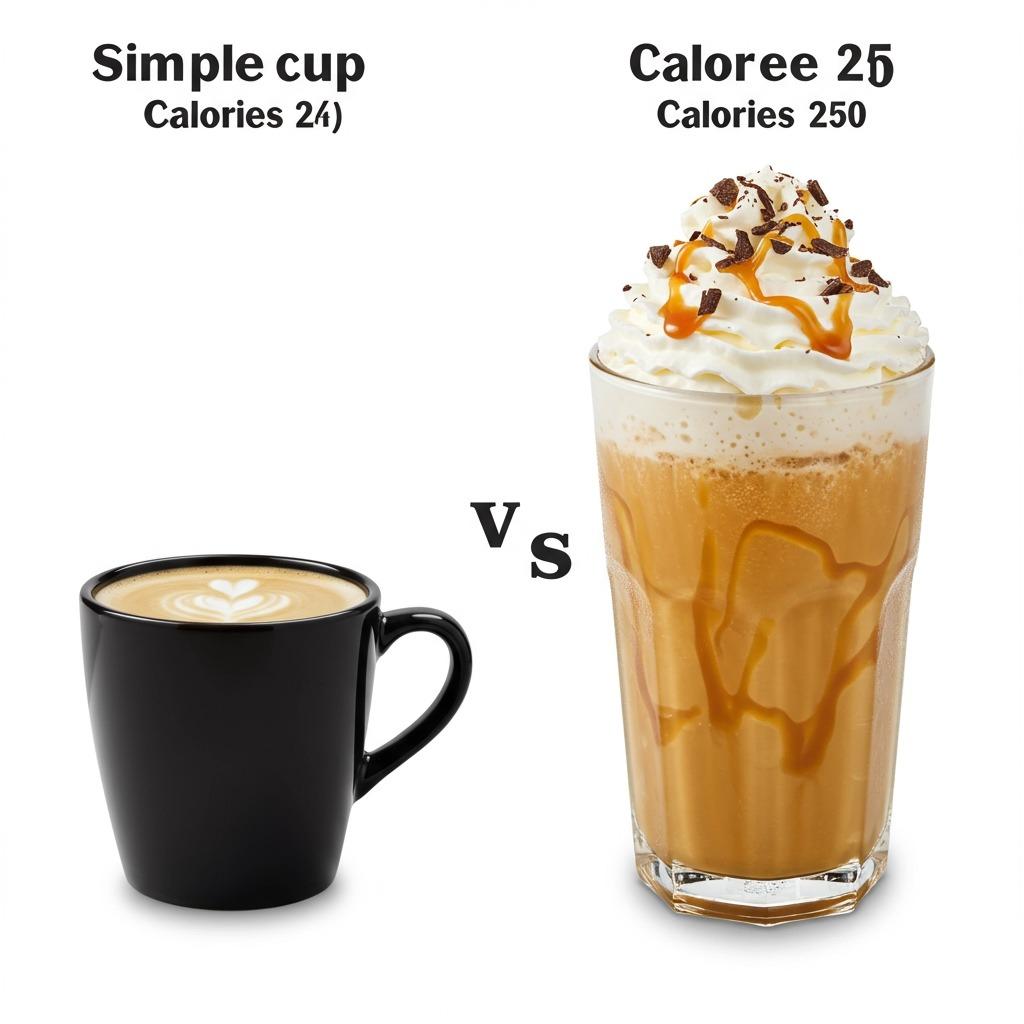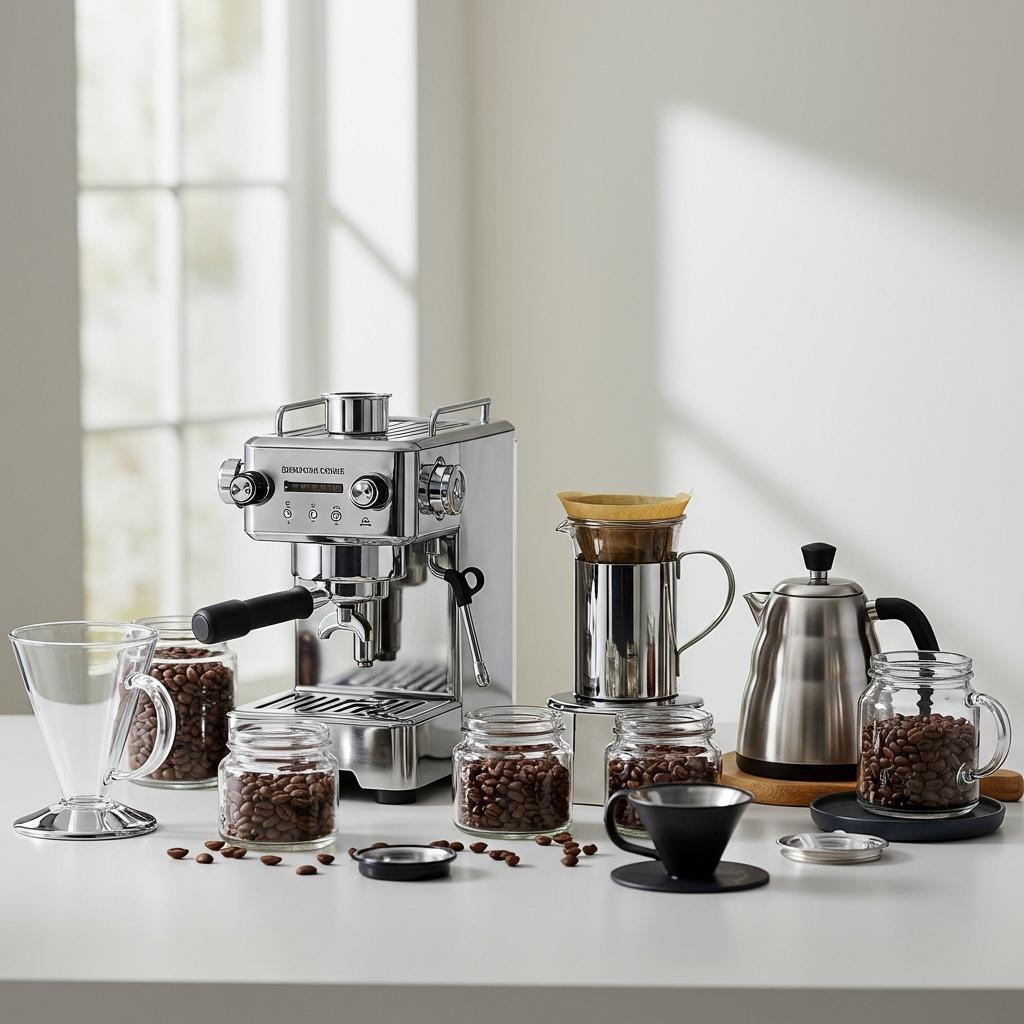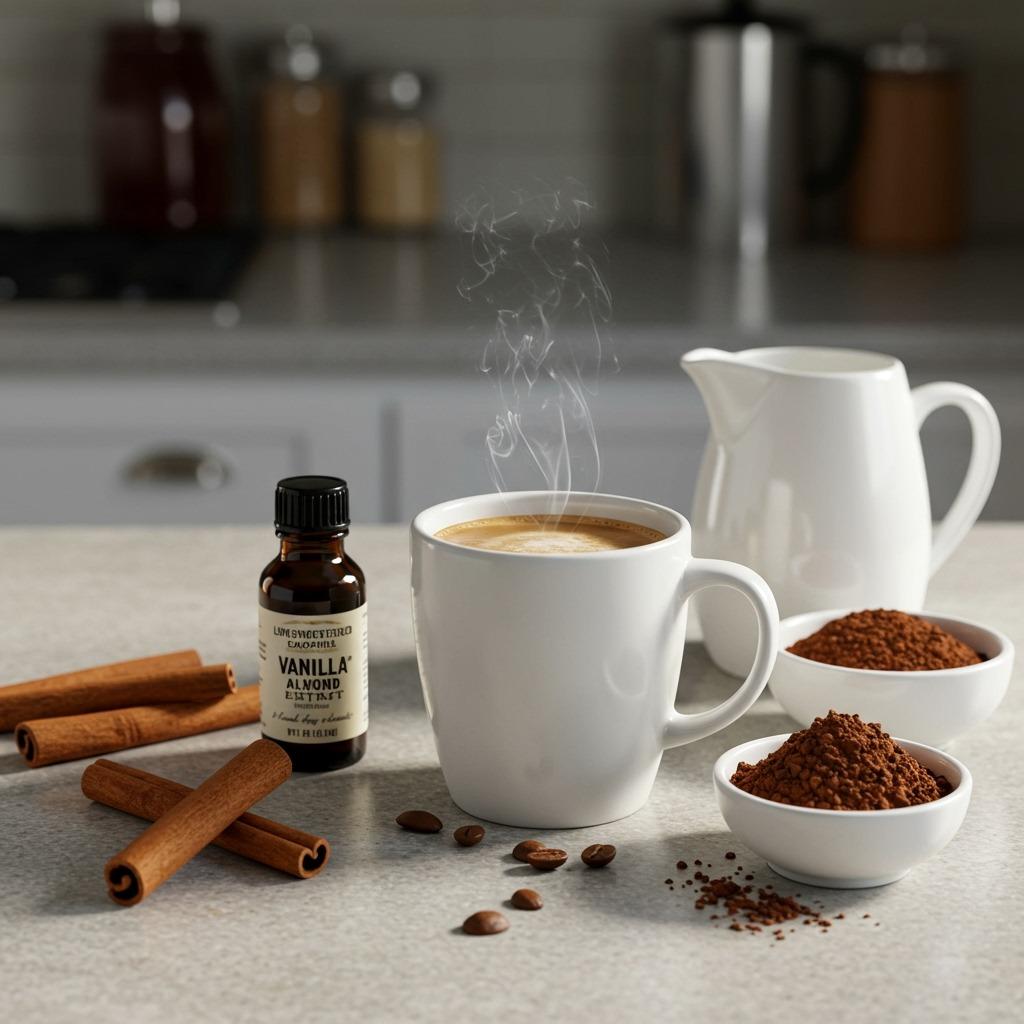Last week, I was sitting around the campfire with a group of fellow hikers when someone asked the question that’s probably crossed every coffee lover’s mind: “How many calories are actually in my morning cup of coffee?” As we passed around steaming mugs of black coffee, the conversation quickly turned into a deep dive about coffee’s nutritional impact on our outdoor adventures and daily routines.
The answer might surprise you. A standard 8-ounce cup of black coffee contains approximately 2 calories. This minimal calorie count makes black coffee essentially a zero-calorie beverage, which is why it’s often rounded down to zero on many nutrition labels.
But there’s so much more to understand about coffee’s caloric content, especially when you start adding those tempting extras. Whether you’re trying to maintain your energy for long hikes, manage your weight, or simply make informed choices about your daily coffee ritual, understanding the caloric impact of your coffee choices can make a significant difference.
Breaking Down Coffee Calories by Type
The calorie content varies slightly depending on the brewing method and coffee concentration, but the differences are relatively small for plain black coffee preparations.
Black Coffee Varieties
Regular drip coffee contains about 2 calories per 8-ounce cup, making it the standard baseline for coffee calorie calculations. This includes coffee made in standard drip coffee makers, pour-over methods, and most filtered brewing techniques.
Espresso contains 1-2 calories per 1-ounce shot. While this might seem comparable to regular coffee, remember that espresso is much more concentrated. If you were to drink the equivalent of 8 ounces of espresso strength (which would be about 8 shots), you’d consume roughly 20 calories.
Cold brew coffee typically contains 2-5 calories per 8-ounce cup. The slightly higher calorie count comes from the extended brewing time, which can extract more compounds from the coffee grounds. The longer steeping process pulls out more oils and soluble solids than traditional hot brewing methods.
Americano, made by diluting espresso with hot water, contains about 5 calories per 8-ounce cup. The slight increase over regular drip coffee comes from the espresso base, which is more concentrated before dilution.
Iced black coffee maintains the same 2 calories per 8-ounce serving as hot coffee. The temperature doesn’t affect the caloric content; only the extraction method and brewing time influence calorie levels.
Decaffeinated coffee contains nearly 0 calories per 8-ounce cup. The decaffeination process removes most of the compounds that contribute to coffee’s minimal calorie content, making it even lower than regular coffee.
Why Coffee Has So Few Calories
Black coffee consists of approximately 98% water and only 2% extracted coffee solids. This composition explains its extremely low calorie content. The coffee beans themselves contain oils, proteins, and carbohydrates, but the brewing process extracts very little caloric content into the final beverage.
The compounds that do make it into your cup include caffeine, antioxidants, and trace amounts of minerals and vitamins. These contribute flavor, aroma, and health benefits without adding significant calories. This is why coffee can provide alertness and potential health benefits while remaining virtually calorie-free.
During the roasting process, many of the sugars in coffee beans caramelize, creating complex flavors but not significantly increasing the extractable calories. The oils that give coffee its rich flavor and aroma contribute minimally to the overall caloric content.

When Coffee Calories Start Adding Up
While plain black coffee is virtually calorie-free, adding ingredients dramatically increases the calorie count. This is where many coffee lovers unknowingly consume hundreds of extra calories daily.
Common Coffee Additions and Their Caloric Impact
Milk additions can quickly transform your low-calorie coffee into a more substantial caloric investment. Whole milk adds 9 calories per tablespoon, which might not seem like much, but most people use 2-4 tablespoons in their coffee. A quarter cup of whole milk adds 36 calories to your morning cup.
Skim milk provides a lower-calorie option at 5 calories per tablespoon. While it reduces the caloric impact by nearly half compared to whole milk, it also changes the texture and richness of your coffee experience.
Half-and-half is a popular choice for its creamy texture, but it packs 20 calories per tablespoon. Those who prefer a rich, creamy coffee might use 2-3 tablespoons, adding 40-60 calories to their cup.
Heavy cream represents the highest-calorie dairy option at 52 calories per tablespoon. Just two tablespoons can add over 100 calories to your coffee, transforming it from a virtually zero-calorie beverage to a significant caloric intake.
Sugar contributes 16 calories per teaspoon. Many coffee drinkers use 1-3 teaspoons, adding 16-48 calories. When combined with cream or milk, these additions can easily push a single cup of coffee over 100 calories.
Honey provides 21 calories per teaspoon and offers a different flavor profile than sugar. While it contains trace minerals and antioxidants, it still significantly increases your coffee’s caloric content.
Artificial sweeteners like aspartame, sucralose, or stevia contain virtually no calories, making them popular choices for those monitoring caloric intake. However, some people prefer natural sweeteners despite the caloric cost.
Popular Coffee Shop Drinks
Coffee shop beverages represent the highest-calorie coffee options, often containing several hundred calories per serving.
A standard latte made with nonfat milk contains about 72 calories for an 8-ounce serving. However, coffee shop lattes are typically served in 12-16 ounce sizes, increasing the calorie count to 100-150 calories.
Cappuccinos made with nonfat milk contain approximately 46 calories for 8 ounces. The smaller milk-to-coffee ratio compared to lattes keeps the calorie count lower while still providing a creamy texture.
Flavored lattes can contain 134 calories or more for 8 ounces, depending on the syrup used. Vanilla, caramel, and hazelnut syrups each add significant calories, and many coffee shops use 1-2 pumps of syrup per drink.
Mochas combine coffee with chocolate, resulting in about 129 calories for an 8-ounce serving made with nonfat milk. The chocolate component adds both calories and sugar content significantly.
Frappuccinos and blended drinks often exceed 300-500 calories per serving due to added sugars, whipped cream, and other high-calorie ingredients. These beverages are more accurately categorized as desserts than coffee drinks.
For outdoor enthusiasts interested in making quality coffee while camping, learning about cowboy coffee techniques can help you enjoy flavorful coffee without relying on high-calorie additions.

Nutritional Value Beyond Calories
While black coffee is extremely low in calories, it provides significant nutritional value that extends far beyond its caloric content.
Vitamin and Mineral Content
Riboflavin (Vitamin B2) makes up about 14% of the daily recommended value in an 8-ounce cup of coffee. This B vitamin plays crucial roles in energy metabolism and cellular function, making it particularly valuable for active individuals.
Niacin (Vitamin B3) contributes about 3% of the daily value per cup. Niacin supports cardiovascular health and helps convert food into energy, complementing coffee’s natural energizing effects.
Thiamin (Vitamin B1) provides another 3% of daily needs. This vitamin is essential for nervous system function and energy metabolism, supporting both mental alertness and physical performance.
Potassium content reaches about 3% of daily requirements per cup. This mineral supports muscle function and blood pressure regulation, which can be particularly important for people engaged in physical activities.
Antioxidant Powerhouse
Coffee contains significant amounts of antioxidants, including polyphenols and chlorogenic acid. These compounds help protect cells from oxidative stress and may reduce inflammation throughout the body.
Research published in the American Journal of Clinical Nutrition indicates that coffee is one of the largest sources of antioxidants in the Western diet. For many people, coffee provides more antioxidants than fruits and vegetables combined.
The antioxidant content varies based on roasting level, with lighter roasts generally retaining more antioxidants than darker roasts. However, darker roasts develop different beneficial compounds during the roasting process.
Caffeine Content and Effects
Caffeine content averages about 96 mg per 8-ounce cup but varies significantly based on brewing method, bean type, and preparation strength. This natural stimulant provides the alertness and focus that make coffee so popular.
Caffeine can increase metabolic rate by 3-11%, according to research from the National Institutes of Health. This metabolic boost can help with weight management and may enhance athletic performance.
The half-life of caffeine is approximately 5-6 hours, meaning it takes that long for your body to eliminate half of the consumed caffeine. Understanding this timing can help you optimize coffee consumption for energy without disrupting sleep.
Factors Affecting Coffee’s Calorie Content
Several variables can influence the minimal calorie content in your coffee, though the differences remain relatively small for practical purposes.
Roast Level Impact
Dark roast coffee contains approximately 2 calories per cup. The extended roasting process breaks down more of the original compounds in the beans, potentially reducing the extractable caloric content slightly.
Medium roast coffee typically contains about 2.5 calories per cup. This roast level preserves more of the original bean compounds while still developing complex flavors through the roasting process.
Light roast coffee may contain 2-3 calories per cup. The shorter roasting time preserves more of the original sugars and acids in the beans, potentially contributing slightly more extractable compounds.
The differences between roast levels are minimal from a caloric standpoint but can significantly impact flavor, acidity, and antioxidant content.
Brewing Method Variations
Drip coffee methods typically extract about 2 calories per 8-ounce cup. This includes automatic drip machines, pour-over methods, and most filtered brewing techniques.
French press coffee may contain 2-3 calories per cup due to the longer extraction time and metal filter that allows more oils and fine particles into the final beverage.
Espresso preparation results in a higher concentration, with 1-2 calories per shot. The high pressure and fine grind extract more compounds per ounce of liquid than other brewing methods.
Cold brew coffee can contain 3-5 calories per cup because the extended steeping time (12-24 hours) extracts more compounds from the coffee grounds than hot brewing methods.
Bean Quality and Origin
Higher quality beans from specific growing regions may have slight variations in oil content and composition, but the difference in calories remains negligible for practical purposes.
Processing methods, such as washed versus natural processing, can affect flavor compounds but don’t significantly impact caloric content.
Freshness of beans affects flavor and aroma more than caloric content, though fresher beans may retain slightly more oils that contribute minimal calories.

Coffee for Weight Management
Black coffee’s minimal calorie content makes it an excellent choice for those monitoring their weight, but its benefits extend beyond just being low in calories.
Metabolic Benefits
Increased metabolic rate from caffeine consumption can boost calorie burning by 3-11% for several hours after consumption. This effect is most pronounced in lean individuals but provides benefits for most coffee drinkers.
Enhanced fat oxidation during exercise has been demonstrated in multiple studies. Consuming caffeine 30-60 minutes before physical activity can increase the body’s ability to burn fat for fuel.
The thermogenic effect means your body burns additional calories just processing the caffeine. While the effect is modest, it contributes to coffee’s overall impact on energy expenditure.
For those interested in combining coffee with outdoor activities, check out these hiking snacks that pair well with your morning coffee routine.
Appetite Suppression
Natural appetite suppressant effects from caffeine can help reduce overall caloric intake throughout the day. Many people find that coffee helps them feel satisfied between meals.
Timing considerations matter for appetite suppression. Consuming coffee 30-60 minutes before meals may help reduce portion sizes and overall caloric intake.
Individual variation in appetite response means some people experience stronger effects than others. Pay attention to your body’s response to optimize timing and amount.
Exercise Performance
Pre-workout caffeine consumption can improve endurance, strength, and focus during physical activity. This can lead to more effective workouts and greater calorie burn.
Recovery benefits may include reduced muscle soreness and improved glycogen replenishment when coffee is consumed post-exercise.
Hydration considerations are important since caffeine has mild diuretic effects. Balance coffee consumption with adequate water intake, especially during physical activity.
Practical Tips for Low-Calorie Coffee
Keeping your coffee low in calories while maintaining flavor requires some strategic choices and creative approaches.
Natural Flavor Enhancers
Cinnamon adds warmth and sweetness with less than 1 calorie per teaspoon. It also provides antioxidants and may help regulate blood sugar levels.
Vanilla extract contributes 2-3 calories per teaspoon while adding rich flavor. Pure vanilla extract provides better flavor than artificial alternatives.
Unsweetened cocoa powder adds chocolate notes for just 3 calories per teaspoon. Choose high-quality cocoa powder for the best flavor and antioxidant content.
Nutmeg provides warm, spicy notes with less than 1 calorie per pinch. A little goes a long way with this potent spice.
Cardamom offers exotic flavor with minimal calories. This spice is popular in Middle Eastern coffee preparations and provides digestive benefits.
Lower-Calorie Milk Alternatives
Unsweetened almond milk contains only 2-3 calories per tablespoon, making it an excellent low-calorie option. Choose unsweetened varieties to avoid added sugars.
Unsweetened coconut milk provides 5 calories per tablespoon and adds rich, tropical flavor. The canned variety is much more caloric than the carton version designed for drinking.
Oat milk contains about 9 calories per tablespoon and provides a creamy texture similar to dairy milk. Some brands add less sugar than others, so read labels carefully.
Soy milk contributes 7 calories per tablespoon and offers protein content similar to dairy milk. Choose unsweetened varieties to minimize caloric impact.
Brewing Optimization
Stronger coffee can reduce the need for additions by providing a more robust flavor. Experiment with coffee-to-water ratios to find your preferred strength.
Quality beans make a significant difference in flavor, potentially reducing the desire to add caloric enhancers. Invest in freshly roasted, high-quality coffee beans.
Proper storage maintains coffee freshness and flavor. Store beans in an airtight container away from light, heat, and moisture.
Grind timing affects flavor extraction. Grind beans just before brewing for optimal taste and minimal need for flavor additions.

Coffee’s Role in Outdoor Adventures
For outdoor enthusiasts, understanding coffee’s caloric content becomes particularly important when planning nutrition for extended adventures.
Backpacking Considerations
Weight management in backpacking means every calorie counts, both in terms of what you carry and what you consume. Black coffee provides energy and alertness without a significant caloric load.
Instant coffee options typically maintain the same low-calorie content as brewed coffee while offering convenience and weight savings for extended trips.
Caffeine timing can optimize energy levels for challenging hiking days. Strategic coffee consumption can provide energy boosts when you need them most.
Those interested in primitive camping will appreciate coffee’s simplicity and minimal nutritional impact on their food planning.
Cold Weather Camping
Increased caloric needs in cold weather camping mean that coffee’s minimal calories won’t significantly impact your overall energy balance, but the warmth and psychological benefits remain valuable.
Thermoregulation benefits from hot beverages can help maintain body temperature without relying on high-calorie additions.
The importance of a morning routine increases in challenging conditions, and coffee can provide both physical and mental preparation for difficult days.
Energy Management
Steady energy from coffee’s minimal calories plus natural caffeine can help maintain alertness without the crashes associated with high-sugar energy drinks.
Appetite timing can be managed strategically, using coffee’s appetite-suppressing effects to optimize meal timing during long hiking days.
Recovery applications include using coffee’s antioxidants and mild anti-inflammatory effects to support recovery after strenuous outdoor activities.
For comprehensive outdoor meal planning, consider these easy camping meals for the family that complement your coffee routine.
Making Informed Coffee Choices
Understanding coffee’s caloric content empowers you to make choices that align with your health and fitness goals while still enjoying your daily coffee ritual.
Daily Calorie Budgeting
Multiple cups of black coffee throughout the day contribute fewer than 10 calories total, making coffee consumption virtually insignificant from a caloric standpoint.
Addition awareness becomes crucial when you realize that common coffee additions can contribute 50-200+ calories per cup. Track additions carefully if calories matter to your goals.
Habit evaluation might reveal that switching from flavored coffee drinks to black coffee with minimal additions could save hundreds of calories daily.
Quality vs. Convenience
Home brewing allows complete control over ingredients and caloric content while often providing better flavor than convenience options.
Coffee shop navigation requires awareness of hidden calories in specialty drinks. Ask for modifications like nonfat milk, sugar-free syrups, or reduced portions.
Travel planning should include strategies for maintaining your preferred coffee routine without relying on high-calorie convenience options.
Long-term Health Perspective
Sustainable habits focus on enjoyable, maintainable coffee practices rather than extreme restrictions that might not last.
Overall, diet context matters more than obsessing over coffee’s minimal calories. Focus on your total daily intake and overall eating patterns.
Lifestyle integration should make coffee a positive part of your routine that supports rather than hinders your health goals.
The Academy of Nutrition and Dietetics emphasizes focusing on overall eating patterns rather than individual food components, which applies well to coffee consumption decisions.
The Bottom Line on Coffee Calories
A cup of black coffee contains only 2 calories, making it virtually a zero-calorie beverage that can fit into any calorie-conscious eating plan. This minimal calorie content, combined with coffee’s natural health benefits and metabolism-boosting properties, makes it an excellent choice for those managing their caloric intake.
The real caloric impact comes from what you add to your coffee. Milk, cream, sugar, and flavored syrups can quickly transform your low-calorie coffee into a high-calorie indulgence. Being mindful of these additions allows you to enjoy coffee while maintaining control over your caloric intake.
For outdoor enthusiasts, coffee’s minimal caloric impact makes it an ideal beverage for adventures where every calorie counts. Whether you’re backpacking through remote wilderness or enjoying a weekend camping trip, black coffee provides energy, alertness, and comfort without significantly impacting your nutritional planning.
Remember that coffee’s value extends far beyond its caloric content. The antioxidants, vitamins, and performance benefits make it a valuable addition to a healthy lifestyle, regardless of its minimal calorie contribution. Focus on enjoying quality coffee while making informed choices about additions that align with your health goals.
FAQ
Q: Does decaf coffee have the same calories as regular coffee?
A: Decaffeinated coffee actually has slightly fewer calories than regular coffee, containing nearly 0 calories per 8-ounce cup. The decaffeination process removes some of the compounds that contribute to coffee’s minimal calorie content.
Q: How many calories are in cold brew coffee?
A: Cold brew coffee contains 2-5 calories per 8-ounce cup, slightly more than regular hot coffee due to the longer extraction time. The extended brewing process extracts more compounds from the coffee grounds.
Q: Do flavored coffee beans add calories?
A: Flavored coffee beans typically don’t add significant calories since the flavoring is usually applied as oils in minimal amounts. However, flavored coffee drinks with added syrups and sweeteners can contain hundreds of calories.
Q: How many calories does espresso have compared to regular coffee?
A: A single shot of espresso (1 oz) contains 1-2 calories. While this seems similar to regular coffee per ounce, espresso is much more concentrated, so an 8-ounce equivalent would contain about 20 calories.
Q: Can I drink unlimited black coffee without worrying about calories?
A: From a caloric standpoint, black coffee’s minimal calories make it essentially unlimited. However, consider caffeine intake limits (400mg daily for most adults) and potential effects on sleep, anxiety, and digestion rather than calories.
